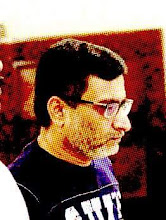
Franco - Belgian comics have a charm that is so unique. It has produced a vast volume of still growing comics of various categories. The most popular output from this part of the world is undoubtedly Herge's Tintin, and Goscinny - Uderzo's Asterix. Ever wondered how these two look so different yet so similar?

What is distinct about these comics? ...The style.

What is distinct about these comics? ...The style.
Herge and his group of artists such as E P Jacobs (Blake and Mortimer) evolved a style that uses uniform lines, more schematic in appearance, with a simple and straight forward narrative, with realistic (sometime mechanical) backgrounds and props. Even the palette was unique adding to the charm. The story was more realistic mostly related to the current happenings at the time. This has a great appeal and following and one can see this followed today in works such as The Simpsons.
This style came to be known as the Brussel's School or the Ligne Claire to mean a Clear Line.

While this was happening there was a parallel approach to graphic story telling that had more of fantasy, cartoonish realism, fun, humour and physical dynamic action. The lines are mostly made of brush and have varying thickness, similar to classic Disney cartoons. Uderzo's Asterix was an example of such style. Artist Jijé (Joseph Gillain) is credited for his contribution towards establishing this style among a group of artists. One can see this style in Lucky Luke, Oumpah -pah and a variety of other works. One can see this tradition followed till day in the publications such as Dupuis.
This style came to be known as the Marcinelle School or École de Marcinelle, after the namesake town in Belgium near Charleroi.


This style came to be known as the Brussel's School or the Ligne Claire to mean a Clear Line.

While this was happening there was a parallel approach to graphic story telling that had more of fantasy, cartoonish realism, fun, humour and physical dynamic action. The lines are mostly made of brush and have varying thickness, similar to classic Disney cartoons. Uderzo's Asterix was an example of such style. Artist Jijé (Joseph Gillain) is credited for his contribution towards establishing this style among a group of artists. One can see this style in Lucky Luke, Oumpah -pah and a variety of other works. One can see this tradition followed till day in the publications such as Dupuis.
This style came to be known as the Marcinelle School or École de Marcinelle, after the namesake town in Belgium near Charleroi.



Well these are academics. Marcinelle or Brussels.. who cannot love them both?!!



No comments:
Post a Comment